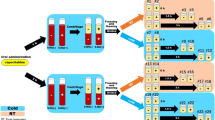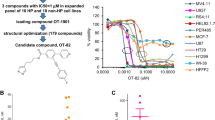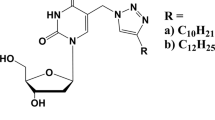Abstract
EXTENSIVE clinical experience with ‘Myleran’ (I, n= 4) in the treatment of chronic myeloid leukæmia1 has shown that when over-dosage is avoided the drug is free from side-effects. On the other hand, other alkylating agents which are used clinically, namely, ethyleneimine derivatives and nitrogen mustards, usually cause some side-effects. This contrast may be attributable to a different mechanism of action for ‘Myleran’ and for the other alkylating agents. Evidence for this difference arises from comparison of the effects of ‘Myleran’ and a mustard (chlorambucil) on rat bone-marrow2 and from a similar comparison where, when the drugs were used clinically in leukæmia, there was no enhanced excretion of uric acid after administration of ‘Myleran’ although nitrogen mustards and tri-ethylenemelamine caused a significant rise in uric acid excretion3. ‘Myleran’ and its congeners (I), while they inhibit experimental tumours, cause a marked depression of bone-marrow function and cannot therefore be considered suitable for the treatment of solid tumours in man. In the ‘Myleran’ series there is evidence that variations in neutrophil-depressing and also in tumour-inhibitory activity may depend very much on the ratio between the solubility of the particular compound in water and in ether4. In the hope that a very large relative increase in water solubility might possibly minimize the bone-marrow depressing properties of the ‘Myleran’ series while leaving unaffected tumour-inhibitory activity together with the apparent clinical virtues attributable to the ‘Myleran’ type of action, we decided to modify the series by the insertion of hydroxy groups in the polymethylene chain. Bis-l :6-2′-chloroethylamino-1:6-dideoxy-D-mannitol (II) had been made because it was a type of nitrogen mustard which it was thought might inhibit glycolysis5. The fact that its tetrahydroxylated hexamethylene chain structure was consistent with tumour-inhibiting activity led us to choose 1 : 6-dimethanesulphonyl-D-mannitol (III) as the first member of our new series.
This is a preview of subscription content, access via your institution
Access options
Subscribe to this journal
Receive 51 print issues and online access
$199.00 per year
only $3.90 per issue
Buy this article
- Purchase on Springer Link
- Instant access to full article PDF
Prices may be subject to local taxes which are calculated during checkout
Similar content being viewed by others
References
Galton, D. A. G., and Till, M., Lancet, i, 425 (1955).
Galton, D. A. G., Elson, L. A., and Till, M., Brit. J. Haematol. (in the press).
Winkler, A., Ughazy, V., and Cerny, V., Neoplasma, 4, 340 (1957).
Timmis, G. M., and Hudson, R. F., Ann. N.Y. Acad. Sci., 68 (3), 727 (1958).
Kellner, B., and Nemath, L., Z. Krebsforsch., 61, 165 (1956–57).
Author information
Authors and Affiliations
Rights and permissions
About this article
Cite this article
HADDOW, A., TIMMIS, G. & BROWN, S. Tumour-inhibiting Action of 1 : 6-Dimethanesulphonyl-D-mannitol. Nature 182, 1164–1165 (1958). https://doi.org/10.1038/1821164b0
Issue Date:
DOI: https://doi.org/10.1038/1821164b0
This article is cited by
-
1,6-Dimethansulfonyl-D-mannit, eine neute tumoraffine Substanz
Die Naturwissenschaften (1959)
Comments
By submitting a comment you agree to abide by our Terms and Community Guidelines. If you find something abusive or that does not comply with our terms or guidelines please flag it as inappropriate.



